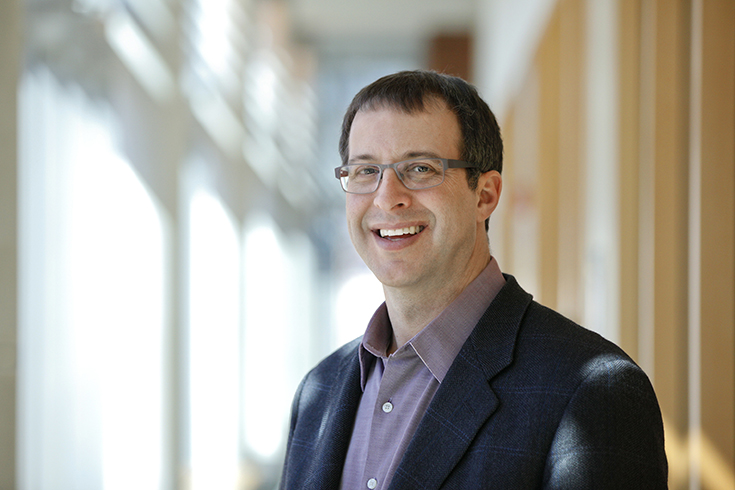David Engerman and research
Harvard University Press published David Engerman’s book The Price of Aid: The Economic Cold War in India, about the origins, evolution and essentially political nature of foreign aid. Engerman offered a research intensive history course in the fall of 2017 called U.S. Responses to Global Inequality: Recent Histories.
Office of the Vice Provost for Research: How did the Center for Teaching and Learning support your class?
David Engerman: The Center for Teaching and Learning (CTL) helped me connect to the library resources at Brandeis. The librarians, Aimee Slater and also Laura Hibbler, who are assets for the university, helped me locate materials so I wouldn’t have to require students to purchase so many books. The idea of Open Educational Resources is to reduce the cost to students. Now the books for the course cost $50-$60, which for an upper level history class is pretty low, about half of what comparable classes would be. The library also helped obtain virtual copies of key readings, which helps students reduce costs.
CTL also helped me organize some of the research elements of the course; it was a very research intensive course. The history department recently established a course rubric called the History Lab, the idea of which is to promote more hands-on student research. For the course in the fall, we devoted the entire last third of the semester to how to put together a research paper. Most of the assignments in the first part of the class were focused on the readings but also developing researching and writing skills.
OVPR: Did you reach out to other professors who use a similar model?
DE: Dan Perlman in Biology and I talked a lot about his Conservation Biology class, though I decided that I couldn’t quite use the model he does, in part because historians march chronologically; I wanted students to find more narrow and specific topics for their research that could come from the whole time period under discussion. The compromise position was to have students practice skills during the first 2/3 of the semester—how to locate databases, how to write introductions, how to use material, quotations, in paragraphs—some of which were more research-oriented, some of which were oriented towards communicating and organizing research. We did open note day, when students projected their notes—mostly in Google Drive—on the screen and we talked about how they took notes, the advantages and disadvantages of different methods. It was really a delight to teach, and I was especially excited to have such a dedicated and talented group of students.
OVPR: Can you tell me why it’s important in research to teach elevator pitches [one assignment on the syllabus]?
DE: I wanted students to focus their arguments. The elevator pitch was designed to have students think about what was the most important thing about their paper and express just that, not really much evidence, just to say: ‘It may seem like an obscure topic, but here’s why my paper matters, and here’s what I have to say about it that’s different from anyone else’. So the elevator pitch is about selling the paper but also about thinking of the core principles. Everything follows from those core principles: how you organize, how you research, how you write, all follows from your central purpose: why is this important and what do you have to say about it?
OVPR: How comfortable were students on primary source research going into the class as compared to when they were coming out?
DE: It’s really hard to assess. The history major, for instance, is not a particularly structured major, like a biology major in which everyone takes courses in the same sequence. The students have very different trajectories: the course included senior history majors and one MA student but also some particularly intrepid and talented first-year students. Some students had done historical research either here or elsewhere, but many had not. About half of the students were history majors but it was listed as an IGS course too. The students who got the most out of the course gained not only knowledge of how to do research, but confidence that they could conquer a large task. The length of the paper seemed intimidating at the beginning of the semester but by the end they’re worrying that they don’t have enough room to do what they want to do. That was a really valuable part of the course: giving students the tools for mastery and then the confidence to actually master the project.
OVPR: Tell me about students' research experience at Brandeis?
DE: All students came out of the course with substantially stronger research skills, even those who came in with experience doing research. For instance, one student came in with plenty of research experience, and really liked doing it, so he chose a topic that took him to the Kennedy Library a couple of times and he did research there.
It’s easy when you teach 20th Century American History to have primary sources available, and the Kennedy Library is right down the Pike. On campus, we’re fortunate that the library has a really smart acquisition strategy which makes it easy to do primary source research. They have newspaper archives as well as magazine and periodical full text databases. The librarians also worked with us to find other kinds of materials that weren’t housed at Brandeis. For instance, the World Bank has a good online archive. Thanks to the librarians, students had plenty of opportunities for serious research.
